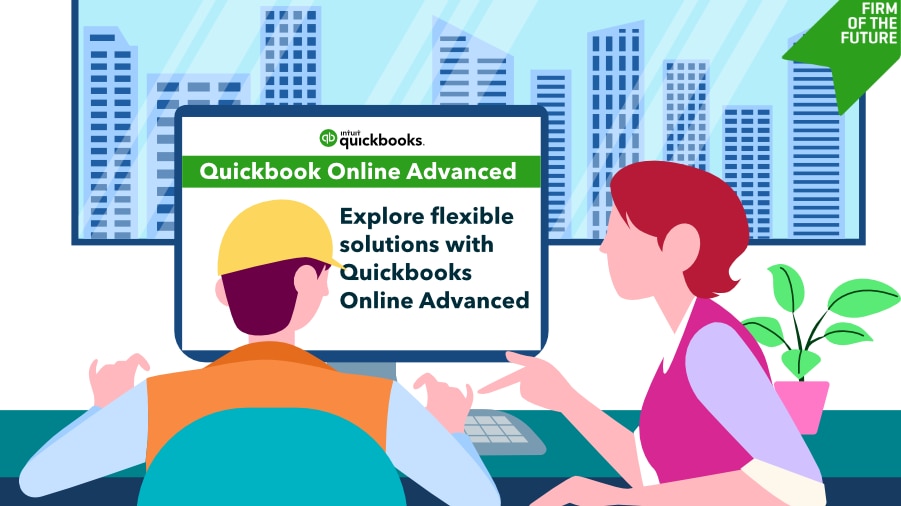For bookkeeping and accounting professionals who have defined their niche, it’s common to run up against the same types of challenges from one client to the next within that niche. You might be a QuickBooks ProAdvisor, but how niche does your setup get?
When dealing with industries that have their unique needs, it’s helpful to know some strategies and tips to set up your clients’ QuickBooks Online Advanced in a way that lends itself to the type of business they run.
One of my niches that came about, thanks to my co-firming relationship with The Profit Constructors, is construction. This niche is different from other industries because of some very specific accounting needs, including job costing, WIP reporting, and the need to collect certificates of insurance from subcontractors to ensure compliance.
As a result, it’s going to be helpful to set up QuickBooks Online Advanced in such a way that simplifies your service delivery and your clients’ financial lives. Here are five steps I take to set up QuickBooks Online Advanced for a construction business.
1. Address the unique requirements of mid-market businesses
QuickBooks Online Advanced is an indispensable tool because it offers scalability, advanced financial management capabilities, stringent security measures, and versatile customization options. When paired with integrated solutions such as QuickBook Online Payroll, QuickBooks Payments, and the new accountant-approved construction apps, Advanced becomes a holistic ecosystem.
The result? The ecosystem empowers mid-market enterprises to efficiently manage their finances, streamline payroll processes, and provide convenient payment options to their customers, while also seamlessly integrating specialized tools that enhance their industry-specific workflows. This comprehensive approach ensures that mid-market businesses meet their immediate financial demands, and position themselves for sustainable growth and success in their respective industries.
2. Customize your chart of accounts
Simplify your chart of accounts by categorizing Cost of Goods Sold into the top five main categories: Labor, Materials, Subcontractors, Equipment, and Other. Use class coding instead of multiple income/expense lines to keep financials simple and easier for bank review.
3. Set up Items and Services
Follow the best practice of keeping it simple. While there are plenty of ways to do this, my recommendation is to determine the absolute minimum number of inventory items your client needs in order to send an invoice or process a subcontractor bill. Try to avoid getting too far into the weeds. Being too granular—which might seem like a good idea for the sake of accuracy—will intensify your internal processes and cause unnecessary extra work.
4. Manage Customers and Projects
If you’re not using an integrated third-party app, I recommend the Projects feature in QuickBooks to help stay organized by job. If you haven’t worked with Projects before, there is a lot of help online.
Note there are a few areas in Projects that need to be identified prior to setup. These little nuances, such as labor burden, for example, can become a challenge if you don’t get the setup just right. Even with a little bit of extra work to configure, I believe using Customers and Projects to organize your construction clients is the best way to streamline workflow if you’re not going to integrate another app.
If you’re integrating a third-party app such as Knowify, the project management itself resides within that app, allowing QuickBooks to see higher level information by customer.
5. Use Classes or Locations
In construction, location matters. You can make good use of Classes to categorize types of services offered or departments, and even divisions, within the construction company. Locations can be used for determining warehouse locations state by state or city by city. This is useful for your construction clients because they will often house inventory in vehicles or moving trucks, multiple warehouses, or other locations that they’ll want to be able to specifically monitor or report on.
Best practices are best
On top of these five niche-based construction steps, you’ll still want to engage in common best practices that represent clients in any industry.. Here are four examples:
- Use QuickBooks Time to track time and expenses. Data in QuickBooks Time syncs to QuickBooks Online and QuickBooks Online Payroll to streamline payroll and invoicing. In addition, the Workforce app is convenient for remote and on-the-go staff.
- Put on your trusted advisor hat and help your clients sort out HR issues, many of which can be solved with a lot of the new benefits in QuickBooks Online Payroll, including HR Advisor, health benefits, 401(k) plans, workers’ comp, and 24/7 expert support.
- Reconcile the bank accounts regularly. The Bank Feeds’ feature in QuickBooks Online makes it super easy to reconcile a client’s bank account on a monthly basis; you’ll want to ensure your clients’ books are always up to date.
- Train your team on the nuances associated with the construction niche; attend relevant webinars and conferences to ensure the team understands issues in managing the books for construction clients.
While working in the construction niche isn’t easy, having the right tools to handle these specialized accounting and bookkeeping needs helps you streamline your clients’ businesses, while enabling you to spend more time focusing on your client and prospect relationships.



